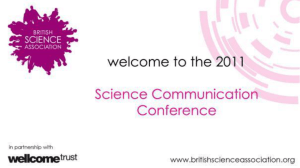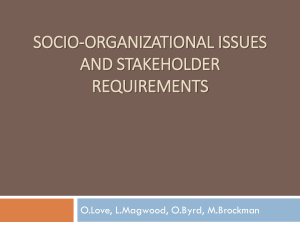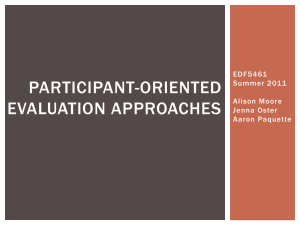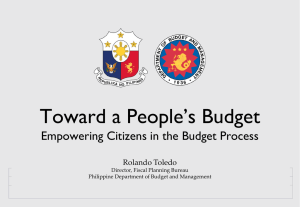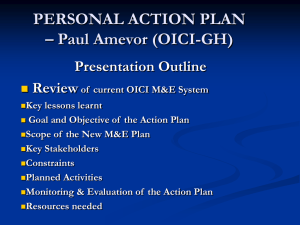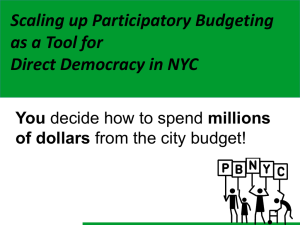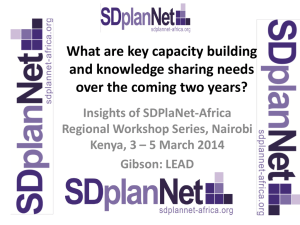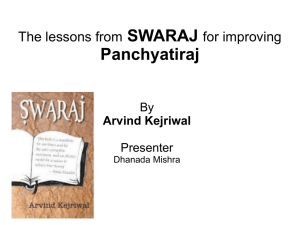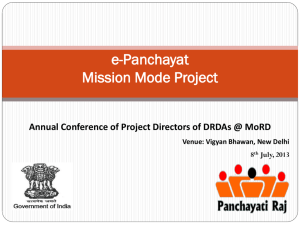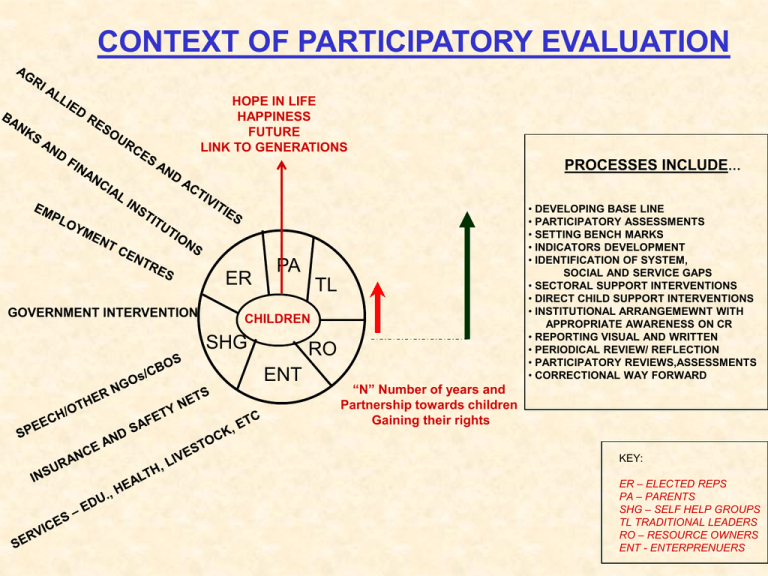
CONTEXT OF PARTICIPATORY EVALUATION
HOPE IN LIFE
HAPPINESS
FUTURE
LINK TO GENERATIONS
PROCESSES INCLUDE…
ER
GOVERNMENT INTERVENTION
• DEVELOPING BASE LINE
• PARTICIPATORY ASSESSMENTS
• SETTING BENCH MARKS
• INDICATORS DEVELOPMENT
• IDENTIFICATION OF SYSTEM,
SOCIAL AND SERVICE GAPS
• SECTORAL SUPPORT INTERVENTIONS
• DIRECT CHILD SUPPORT INTERVENTIONS
• INSTITUTIONAL ARRANGEMEWNT WITH
APPROPRIATE AWARENESS ON CR
• REPORTING VISUAL AND WRITTEN
• PERIODICAL REVIEW/ REFLECTION
• PARTICIPATORY REVIEWS,ASSESSMENTS
• CORRECTIONAL WAY FORWARD
PA
TL
CHILDREN
SHG
RO
ENT
“N” Number of years and
Partnership towards children
Gaining their rights
KEY:
ER – ELECTED REPS
PA – PARENTS
SHG – SELF HELP GROUPS
TL TRADITIONAL LEADERS
RO – RESOURCE OWNERS
ENT - ENTERPRENUERS
EVALUATION CAN DETERMINE …….
• Whether the intervention achieved its intended spirit
• Whether all resources – including human and financial –
and systems worked the way it should have been to
complete the task
• What differently could have been done to reach the
destination
• What worked well and what not
• Re-energized pace and new or alternate mechanisms to
be considered
• Whether the intervention reached the right corners
• Should there be any changes to the approach base or
mode of implementation
PRINCIPLES OF PARTICIPATORY IMPACT ASSESSMENTS
• There is a general negative or policing by outsiders connotation associated
with the term “evaluation” whether it is mid-term or terminal. Hence the term
“impact assessment” is used invariably by many players in participatory field.
• Participatory impact assessments are a process of reflection jointly evolved by
all stake holders concerned – starting from the bottom line to the top – as
continuum and not one off event
• Outsiders role is limited to the level of facilitator and convener of forums for
dialogue, reflections, ensure space for every stakeholder, be sensitive about
cultural realities and sensitivities
• Also the outsider need to help viewing local perceptions having link to wider
concepts, external factors, and contextualize the outcomes with wider
perspectives
• The whole process needs to be transparent and accountable to all partners
wherein every decision and change is consulted/informed and involved by all
the partners.
Contd ……..
• Tools used in the process should be field tested and ensured for cultural
sensitivity, empowering and not excluding any of the stakeholder on any pretext
• The tools should also be user friendly and flexible
• The assessment should be process oriented since the outputs and outcomes are
subject to be influenced by other external factors too
• The process of participatory impact assessment should keep provision to make
assessment of the internalization level from the monitoring record for specific
interventions made by partners to reach the least ones
• The mid term assessment should be flexible to accommodate issues that would not
Have been foreseen by the project design originally.
• Similarly participatory impact assessments can go beyond the stated objectives of
the project but evolve issues and indicators from user’s experience. This should be
seen as additional benchmarks of navigation by the local players.
Planning
Success of the mid term review or impact assessment greatly rely on the
planning process. Thus it begin with basic questions and appropriate/
clear answers…..
• Who are all the stakeholders we consider and their avilability?
• What is the right time or season to carry out the participatory evaluation
since it involves livelihoods of many players?
• How to carry it out? What tools could be used in the process?
• Who will participate in the process, levels and how?
• How will the information be analyzed? At what interval the stakeholders
concerned will be updated? (failing which it may become yet another
stamping process with participation lable)
• How will this analysis be shared and used by the project partners?
• Child development in the context of participatory evaluation, by SPEECH,
is seen from ‘Rights perspective”.
• Right based approach deals with questions related power, empowerment
processes, practical links between policy and practice and “good Governance”.
• Rights based approach with children is enabling the primary stakeholders to
effectively address structural, systemic causes of poverty, deprivation and
exclusion of the vulnerable and weaker by sex, age, social, colour, race,
power and money.
• There is a clear need to understand the linkages between the concepts of
participation, development and rights and the change processes between
the inequitable relations of power. This lead to the hearing of the voice of the
poor and marginalized in decision making.
• Major duty bearers to ensure child rights in CRA
- Parents
- Service delivery system
- Community
- NGOs, CBOs and INGOs
- State inclusive of its policy, legislative, legal and administrative arms
VARIOUS FORUMS THAT COULD BE USED IN THE
PROCESS OF EVALUATION
• SELF HELP GROUPS
• FEDERATION
• TRADITIONAL LEADERS
• GOVERNMENT EXTENTION STAFF
• CHILDREN FORUMS (IN THIS CASE PALAR PANCHAYATS)
• REPRESENTATIVES OF SECTOR PROGRAMME COMMITTEES
SOME OF THE TOOLS WHICH CAN FACILITITATE PARTICIPATORY
IMPACT ASSESSMENT USER FRIENDLY
•
Social mapping – very useful in facilitating various perceptions and
expression of children about their level of rights and user friendly in
articulation
•
Timeline and trend analysis – track changes, pace with external change,
space assessment and factors associated with the change
•
Venn and linkage – specific to depict sustainability factors and possible
hand holding support needs, support system functioning and accessibility,
positioning of institutional arrangement and dialogue on correctional areas.
•
Seasonal calendars and daily routine – useful in making especially children
below 13 to articulate their views on interventions, dreams and aspirations,
strengthening supplementary system (health, education, recreation and skill
building
•
All these tools needs to be backed by appropriate story lines/semi
structured interviews/role plays and guide sectoral facilitation against the
original objectives
Key thrust areas of “Palar Panchayat”
• Enable children to reflect on their present situation and social imbalances
and create a dialogue forum for themselves.
• Better understand child rights in their own context and critically analyse
what is accessible and not accessible and why
• Facilitate creation of an inventory of skills among themselves which could
be further shaped
• Orient towards good governance principles and citizenship
• Develop exploratory skills on setting benchmarks equity issues around
disability, gender, social grouping and rights and obligations
• Improve participatory skills by providing hands on experience to facilitate
analytical ongoing process of any external and internal system.
• Lobby and advocacy for broader issues through networking
Milestones crossed BY Palar Panchayats
•
Palar Panchayat children managed to represent issues related to children falling victim to
various child rights violations within their panchayats through regular /elected adult
panchayat and government department
•
Children have raised voice on a National level campaign on child abuse in North India
•
Children managed to create a clear data base of child right status in their panchayat using
participatory tools and semi structured interviewing
•
Girl children enrollment campaign is conducted and local fund from their own sources are
raised to support girl children falling out of school system
•
Environment protection issues are handled by palar panchayat
•
Regular gram sabha meetings are conducted one day before the adult panchayat and
resolutions are presented to the larger village forum from child perspective
•
Children have developed indicators to make assessment of their right status within their
panchayat
•
Palar panchayat responded to the disaster situation in the State during tsunami
•
National convention is jointly organized by palar panchayat to influence policy priorities of
National government.


